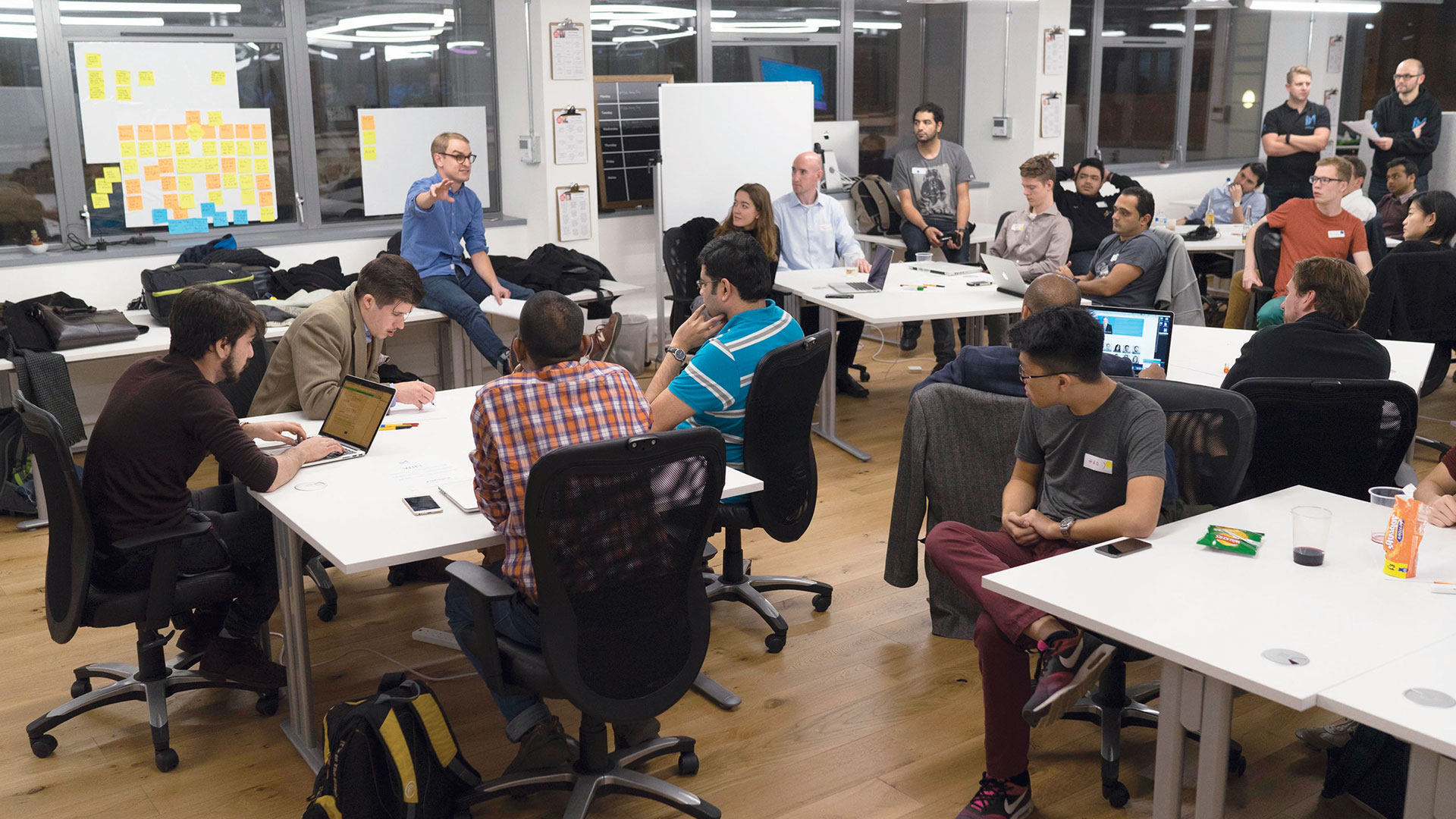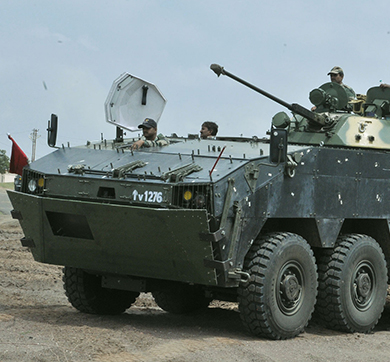June 2017 | 1290 words | 5-minute read
InMotion, the recently established venture capital arm of Jaguar Land Rover, is engineered to support emerging enterprises in the mobility services sector.
A carmaker is a carmaker is a carmaker, right? That is not entirely correct if the entity concerned is Jaguar Land Rover (JLR), and especially not if mobility, rather than the engineering of it, is what animates the thinking of automotive enterprises.
It’s the kind of thinking that has got JLR motoring down the road to the future with InMotion. A venture capital arm and innovation hub for the company to create new businesses in the mobility space, InMotion is looking to foster services and solutions that fuel ideas of smart transportation. Set up in April 2016 as a fully-owned JLR subsidiary, InMotion is focused on everything that relates to mobility as a service: car and ride sharing, drivers, logistics, multi-mode travel, parking and rentals. Besides, InMotion also expects to explore opportunities in car insurance and finance, big data, smart cities and more. InMotion is engineering with a difference and it will complement JLR’s expertise in manufacturing vehicles that dazzle and thrill. “The car will always be a big part of what we do — nothing beats the experience of driving a great car on enjoyable roads — but here we are going beyond the car,” says Sebastian Peck, InMotion’s managing director.
InMotion has opened up a pathway that offers JLR new market segments and business opportunities in an industry changing at breakneck speed. “We aim to shape the emerging mobility supply chain through strategic partnerships and selected investments,” explains Mr Peck. “Furthermore, we are developing and investing in premium mobility services that befit the JLR brand and heritage.”
Integrated experience
Apps and on-demand services are central to InMotion, but there’s more to it than that. “We will strive to provide an integrated user experience for our customer base,” adds Mr Peck. “The aspiration is that our customers can effortlessly move into and between mobility services.”
Mr Peck, who has previously been involved in early-stage technology businesses as an investor and operator, insists there is no divergence separating what JLR has done so well for so long from what InMotion is trying to pull off. “InMotion is focused on mobility as a service, whereas JLR is focused on mobility as an engineering challenge: the connected car, electric vehicles, autonomous automobiles and the like.”
The birthing of the InMotion concept can be traced to an internal JLR project that was initiated in early 2014, when a small team was put together to research the developing mobility sector. The team travelled to countries like the United States, China, Germany, Norway and Singapore, and spoke to JLR employees and customers, academics, industry associations and government bodies.
In September 2014, the ‘iMobility’ team, as it was called, came into being. There was plenty on the team’s agenda and it began to develop models in several mobility-service categories, from car and ride sharing to driver services, smart parking, etc. The starting point was attempting to solve the travel problems that people face in everyday life, whether for leisure or business, and to reduce the friction involved in getting from point A to B.
The iMobility team soon discovered that the game was not just about building services but about seeding and supporting businesses. There was also the necessity of crafting a business model for iMobility itself. Operating in a nascent, unpredictable market, the team needed to operate more like a startup — agile, lean and experimental — than like a large corporate with established processes.
The incorporation of InMotion as an independent subsidiary followed from such logic, allowing the fledgling to combine the advantage of being small and entrepreneurial in nature with that of being part of a sizeable enterprise with resources and a sterling reputation.
InMotion has come a fair distance since those beginner days, with a dedicated facility in London and a 30-strong team, some seconded from JLR, others with a track record in the startup community. The brief, too, has been beefed up: to back the development and scaling up of new service ventures in mobility and the entrepreneurial talent behind them.
“Technology advances and the societal trends that enable these are critical here,” adds Mr Peck. “More and more people want on-demand travel. As Spotify and Netflix show, consumers are willing to pay a subscription to access something rather than own it outright. Such trends will continue to emerge, and not always in an obvious manner.”
Booting it up
The big idea of investing in the future trends of mobility and smart transportation is taking InMotion to interesting places and toBoot is a potent example.
What toBoot offers is simple enough. This is a startup venture that enables online shoppers to have their order delivered and deposited in the boot of their car. Making the car the delivery destination has some crucial advantages. The shopper does not have to be present in person to receive the order and nor does she have to — if the delivery has been missed — go and pick it up from somewhere.
The way toBoot works, the courier with the ordered articles gets the location of the customer’s vehicle and a onetime code to access the boot. Once the delivery is made, the customer receives an order confirmation and authentication that the car is securely locked.
The toBoot concept was first tested with a small-scale feasibility study involving deliveries from the John Lewis chain of department stores in the United Kingdom. Another trial with an extended group of customers is now being planned, with the aim of going beyond that of rolling out the service across the country.
Keeping risk at bay
InMotion believes it can, by lending a hand to startups in the mobility sphere as well as developing its own internal projects, fashion a substantial and sustainable business. The ‘InMotion accelerator’ is a six-month programme where startups are provided pre-seed investment, hands-on support from the InMotion team, access to industry partners and investors, and workspace at InMotion's facilities. “The key is that we de-risk everything as much as possible,” says Mr Peck. “That’s how we intend to provide value for everyone involved: the corporate backers, entrepreneurs and investors, and for the whole ecosystem.”
Understanding and foreseeing customer needs is vital for InMotion’s well-being. “People have different problems in different parts of the world and there often isn’t a one-size-fits-all solution,” says Mr Peck. “It’s crucial therefore to make sure we’re solving real and relevant customer issues. Additionally, introducing JLR’s fantastic products to new audiences and creating new experiences for them are important objectives for InMotion.”
“The most profound change in mobility patterns will happen in congested urban centres with increasingly strict regulations, emission-free zones and the like,” adds Mr Peck. Such density will necessitate new mobility models. “Take Uber, for example. It works well in densely populated spaces because you have many people who want a ride and many drivers who can provide the service. That makes for a very liquid marketplace and we want some of the value being generated there.”
The business canvas for InMotion is the whole wide world. “We consider everybody and everything,” says Mr Peck. “We look to the East and the West. We have this hybrid approach where we invest in mobility models as well as develop them on our own.”
Mr Peck stresses the need for InMotion to be “comfortable being uncomfortable” in a business segment that is mutating even as it is being created. “A huge number of factors are coming together in shaping [this space]: technology, the sharing economy, population trends, the environment and more. It’s not about trying to predict the future; it’s about being adaptive and agile enough to respond to changing customer needs.”
—Philip Chacko













